Op-Ed: From CPOP To NCO — The Changing Face Of The Community Police Officer
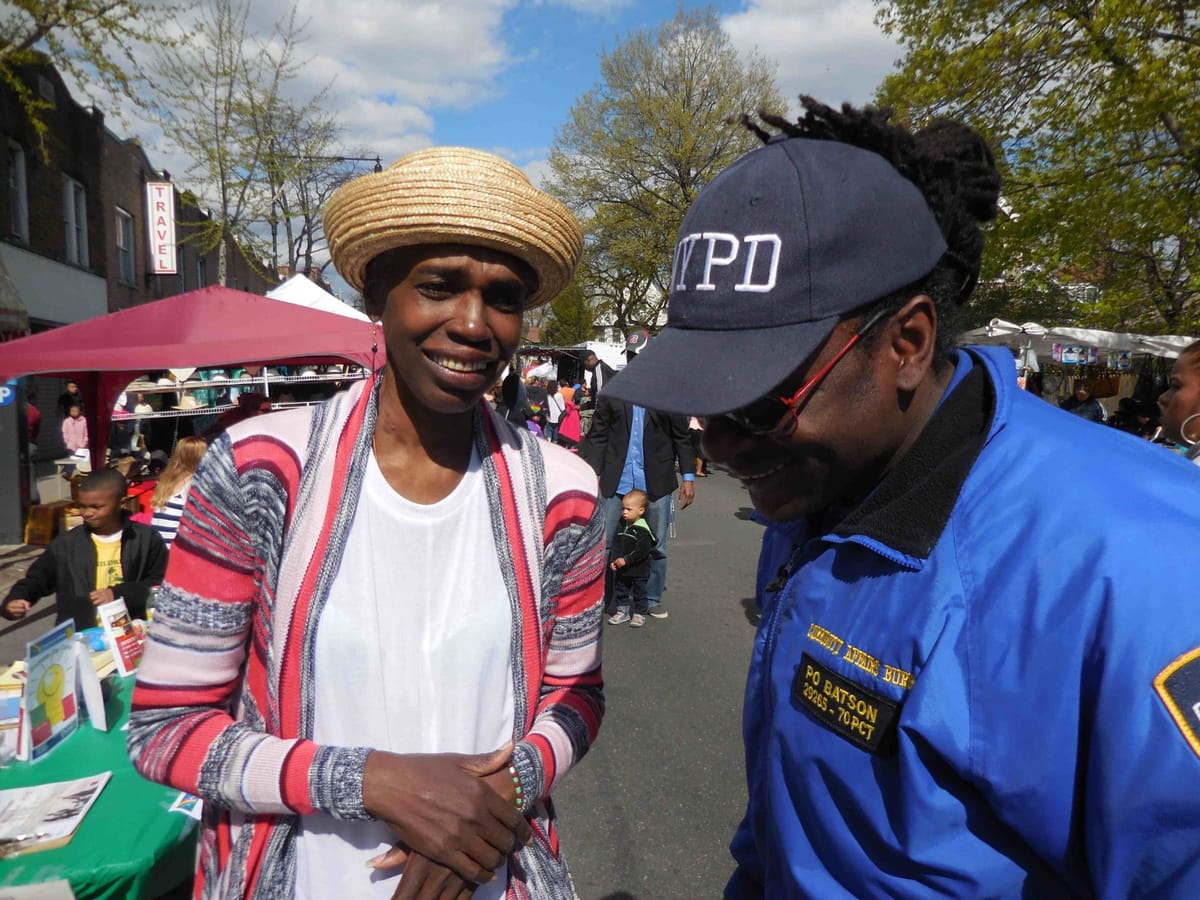

Big changes are happening at the 70th Precinct.
Last year’s announcement of 1,300 new New York City police officers, most of whom will be deployed in the new Neighborhood Coordinating Officer (NCO) program, finally came home last week. In an email from the 70th Precinct, regular attendees of the precinct’s Community Council were told that the new NCO program is scheduled to kick in now.
The terms for a “Community Police Officer” have changed many times in the last 20 years. For the last two years, the role had been officially and effectively abandoned — in favor of “Conditions Units” — in an attempt to use police officers with more efficiency.
(For the purpose of this essay, “CPOP,” which stands for Community Patrol Officer Program, will refer to the old Community Policing model.)
For many reasons, I think that it is important for the face of the NYPD to be more than the one we see when we call 911. For me, the decision to nix the CPOP program a couple years ago was a big loss to our area. 911 response teams play a necessary, but reactive role in all things NYPD.
CPOPs are proactive.
At January’s 70th Precinct Community Council Meeting, I asked Inspector Griffith from Community Affairs at 1 Police Plaza if he could help us understand the difference between the new “Community Policing” model and the old “CPOP Model” we used around here for the last 15 years.
Griffith told us that the term “CPOP” had officially been gone for almost 20 years, however, individual precinct inspectors had some leeway to selectively keep community-oriented officers. Griffith explained that the old style Community Police Officer model differed from the new approach in many ways.
The most obvious is the numbers of bodies. In the original model, our precinct was broken up into 12 “beats.” The CPOP was a single officer generally dedicated to a neighborhood. This officer’s job was to get to know the community.
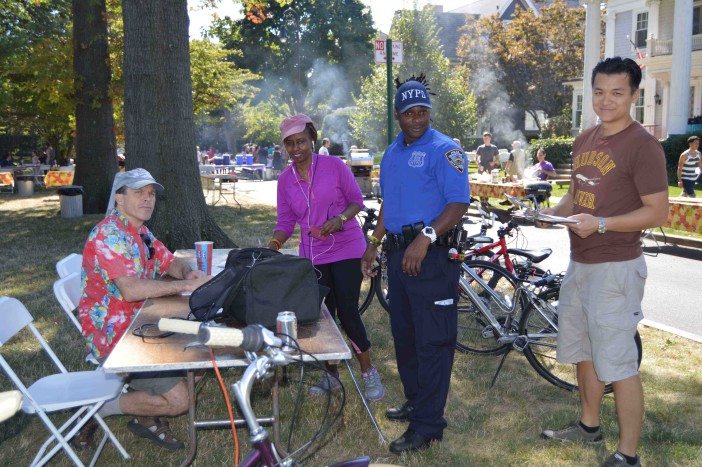
With the new model, the precinct will be broken into four sectors. Each sector will have three cars, with a total of six officers and they will each answer to an NCO in their area. The general idea is that the available officers will not circulate precinct-wide, but stay within their sectors, getting to know the area and residents.
Since the model is new, it is hard to know exactly how it will play out. I am not a professional student of the NYPD, nor am I a legal representative of it. I am just a neighbor who has been working with the 70th for around 15 years and who places value on the community-oriented element of the NYPD.

Some true stories from our own 70th Precinct illustrate why community-oriented policing is so critical:
CPOPs Seek Long-term Solutions
There is a corner in former Beat 9A (Flatbush) where taxi drivers stop to urinate. Enough 311 complaints will generate some attention from an NYPD “Conditions Unit,” and a patrol car will drop by if it has a pause in the action of the very busy 70th Precinct. No one will urinate in front of a police vehicle. This stops the problem for a few minutes each week.
CPOP Darrel Owens wanted a long term fix. He asked neighbors if he could sit on their nearby hidden porch. Once a month for about two hours was all it took. When Owens surprised the drivers with tickets, he told them to spread the word. 911 responders have no time for such “quality of life” issues, and “Conditions Units” provided only temporary relief. A CPOP resolved it.
Protecting The Integrity Of The Statistics
Compstat numbers are a sensitive issue with the NYPD. If the public doesn’t trust the stats, they don’t believe NYPD’s claim that crime is going down. After a neighbor’s daughter was robbed at knifepoint, 911 officers responded, but left without filing a report.
Statistically, the crime did not happen. There can be a lot of explanations why this happened. It could be that officers got the impression that the victim did not want to go through with filing a complaint.
CPOP Joe McGuinness listened to the story. He did not attempt to figure out what went wrong, he just took out his book and knocked on the victim’s door to make a report. Whether it’s to correct mistakes or to protect the NYPD from being accused of killing stats, CPOPs strengthen our trust in the numbers.
CPOPs Help Fix An Imperfect System (2 examples)
1. A neighbor’s car was stolen. “I reported it,” said my neighbor, “but the cops were here for 15 minutes. The second it was clear we did not know when the crime happened, they kind of checked out.” Her sense was correct. 911 responders want to catch the bad guys. But they usually arrive after the fact. The minute they know the crime is cold, they look to more urgent calls.
But CPOP Kim Walker considered Beat 9A her people. She followed up. The victim took Walker to where the car had been parked. Walker noted there was a grate. A seasoned officer, Walker knew the Sheriff’s office sometimes moved cars off of grates if City workers needed access. She called the Sheriff’s office. There was a record of the vehicle being moved two blocks away. A stolen car report was resolved in minutes.
2. FTAP is a program that allows apartment building management to request random NYPD walk-throughs known as “vertical patrols.” But some absentee landlords don’t want cops dropping in regularly. It only brings attention to their building management.
I was approached by a neighbor who claimed the tenants in his building had repeatedly requested FTAP walk-throughs. The request must come from the owner of the building, however. The tenants suspected the landlord was not following through with the request.
After getting the story first-hand from both residents and management, CPOP Erin Barry followed up on the paperwork. After some detective work she found the problem. A clerical error had left the request sitting on someone’s desk for months.
FTAP walk-throughs commenced, trust in the landlord was strengthened, and the building was safer. A CPOP cuts through city bureaucracy.
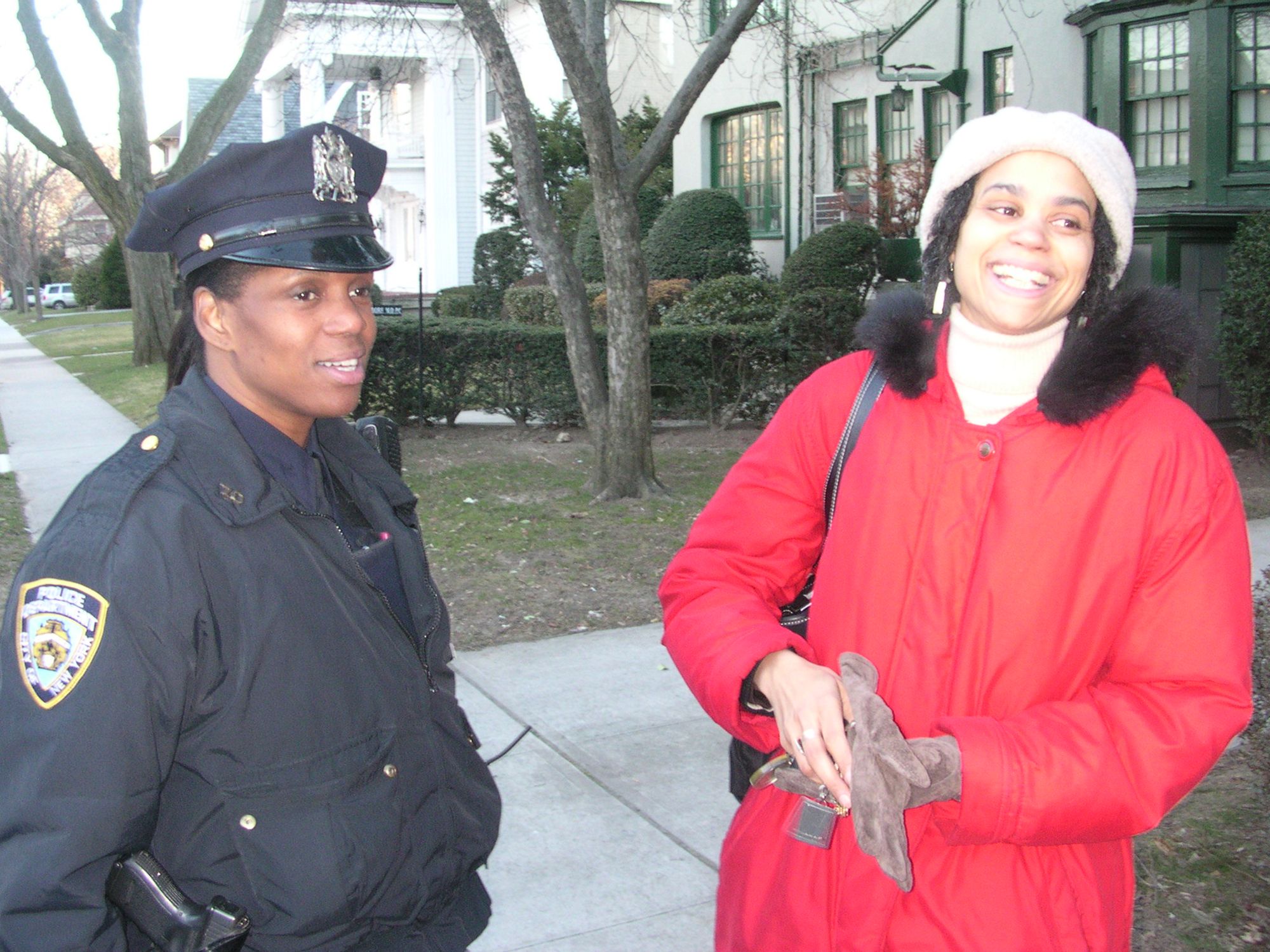
CPOPs Know The Terrain
911 officers responding to a purse snatching on Cortelyou Road chased the thief through backyards, jumping over fences. The thief was a pro. He carried a bag with other clothing into which he changed as he ran from backyard to backyard.
CPOP Rafet Awad heard the call on the radio. But he did not join the chase; instead he listened. He knew the neighborhood. When he heard where the perp had entered a block of yards, he guessed that a broken fence along Church Avenue was a logical place of exit. Awad was waiting for him when he came out. 911 responders cannot know the curves of every neighborhood.
Officer Awad was so popular that neighbors went to the hospital when his wife had a baby. Her thank-you note to a neighborhood association began with, “To my husband’s second family…”
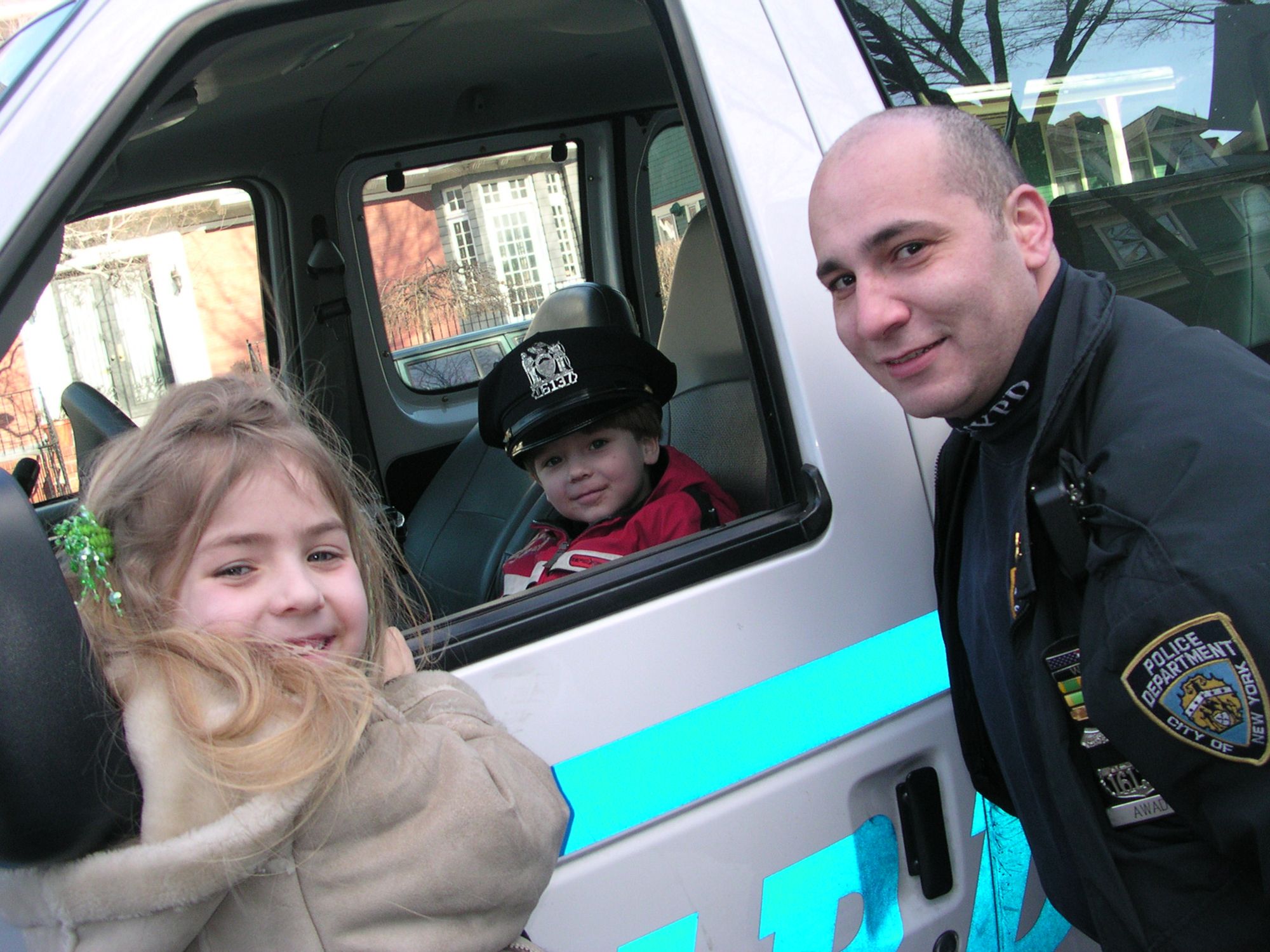
Stories like these could beg the question of why one would ever step back from Community Policing. Let me re-state, I am not an representative of the NYPD and this is only my opinion. One obvious reason is that most of the stories above would not show up on crime statistics.
Stopping crimes before they happen, adding stats that might not have been recorded, and connecting with young people, are long term investments in the community that do not, in short recordable terms, help the numbers.
We have colorful illustrations of this right here in the 70th.
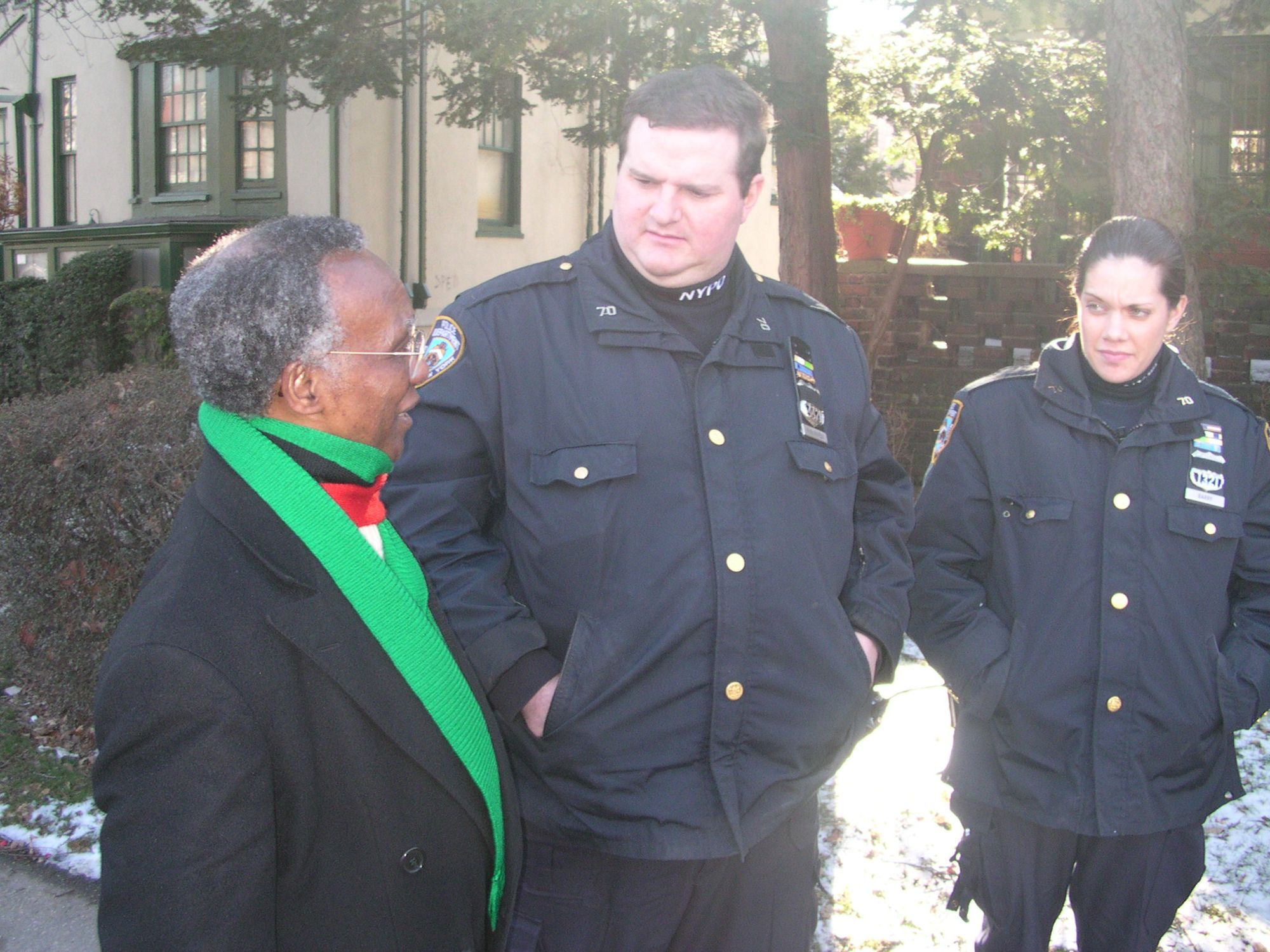
CPOPs Stop Problems Before They Happen
Juan DelaCruz, owner of a McDonalds on Flatbush Avenue came to a 70th Precinct meeting last summer. He explained that groups of people who were not making purchases were lounging in the restaurant for hours, intimidating the customers and taking over. Technically they were not breaking any laws, however, except the request that customers don’t stay for a long time.
Without NYPD to back up the request not to loiter, Delacruz had trouble. He explained that this problem had surfaced the previous summer but that his CPOP, Officer Batson, had started dropping in regularly after school to promote a sense that someone was supporting the staff.
On occasion, Batson ticketed some of the people for quality of life issues. Ultimately, no major crime stat, no story to report, developed that summer. It was just a situation the CPOP recognized as needing his eye. Delacruz was back at the 70th Precinct last summer, wanting to know why Officer Batson was no longer in the same role.
You could ask if it really mattered. DelaCruz’s McDonalds did not explode and he acknowledges that the 70th did start trying to have some impact officers drop in when they could.
But another McDonalds, just a few blocks away, did have an incident that, thanks to social media, made front page news and garnered the 70th global attention. It was a fight video, noted in particular for the lack of adults interfering and highlighting just the kind of out-of-control behavior which Officer Batson had nipped in the bud the previous summer.
Dealing with long term problems like this requires merchants partnering and engaging with the 70th Precinct. It’s not a one way street. But a 911 response comes too late in situations like these. A CPOP kept the problem in check. A summer without them gave us incidents like these.
Early Results From The New NCO Program
An official, renewed commitment to a community oriented approach is a great step towards prioritizing long term fixes over short term stats. Will the new NCO program be all that the above stories suggest? First signs are good.
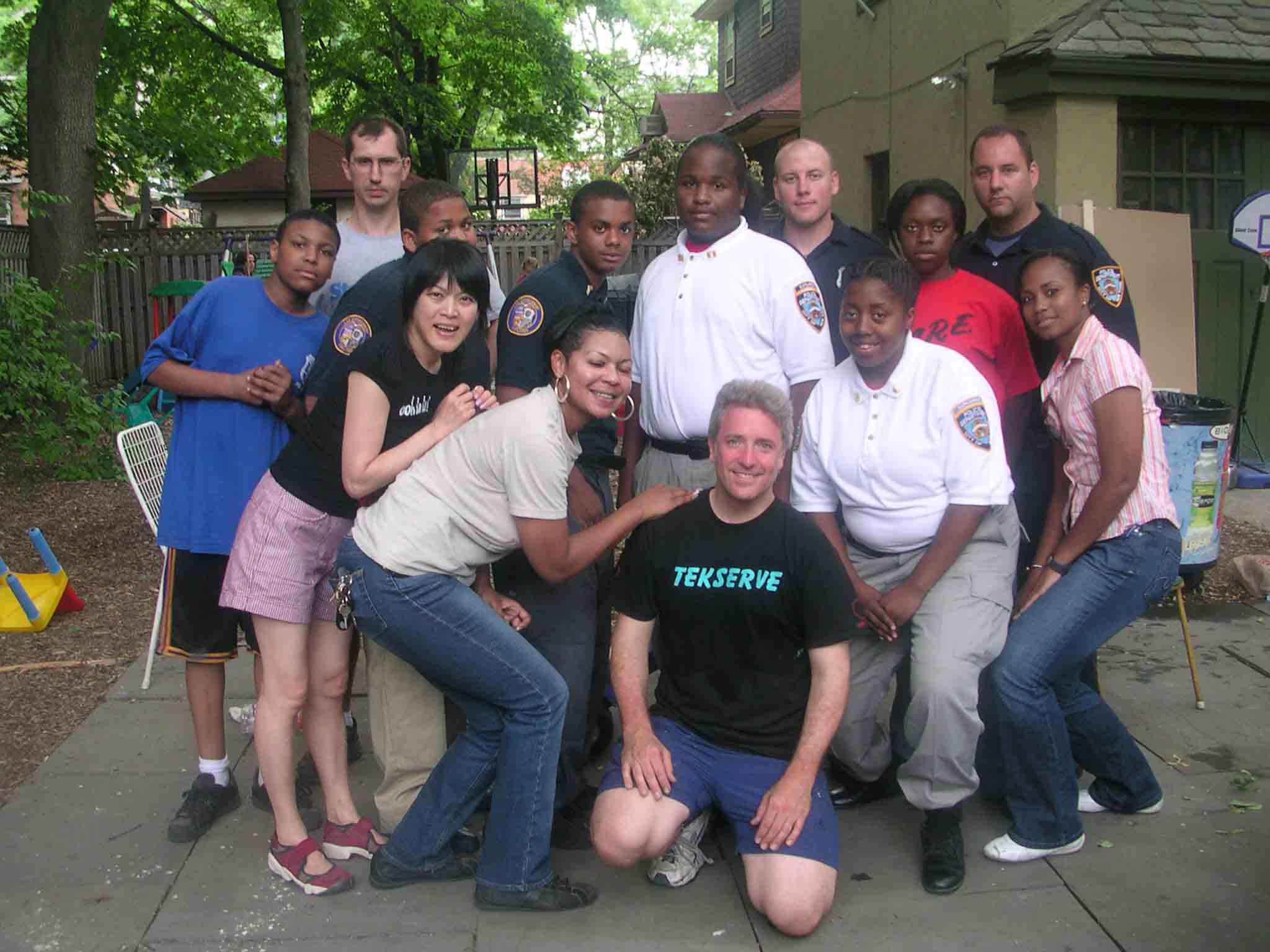
I spoke with an official from Patrol Borough Brooklyn South who had been assigned to help with the transition to the new NCO program. For me, a big difference between my old CPOPs and the current Conditions units, was foot patrols. I think being on foot lends itself to connecting more intimately with residents. The official explained that some of the NCOs will be on foot patrol.
Another big difference I missed was that CPOPs focused on local issues and were not sucked into the 911 response teams. While no one wants an officer to ignore an emergency, the NCOs will similarly be separate from the 911 response teams.
New 70th Precinct Commanding Officer, James Palumbo, announced the new NCO program at the March Community Council meeting. He clarified that the 911 response cars would be separate from the NCO cars, and that the NCO officers would specifically take 3 hours each day “off radio” to focus on getting to know people in the community.
The NCO officers’ job during these hours will be to connect with “community liaisons”. Their focus will be on long-term issues with extreme potential — quality of life issues like blocked driveways or ongoing traffic problems.
The biggest thing I have missed since the CPOP program was dissolved was a direct connection to someone who knew our area. CPOPs would seek out people who were natural connections to the neighborhood and make dates for periodic meetings, exchange phone numbers, etc. The NYPD official I spoke with assured me that not only will this be back in effect, but that they have actually created the term “community liaison” to identify such people.
I can tell you that I know attendees of the Community Council meetings who are already getting calls from Community Affairs Officer Mike Smith to ask if they are interested in being officially noted as said liasons. In Commanding Officer Palumbo’s words, “community helps prevent the fuse from burning.”
These signs all suggest that the new NCO program could succeed in retaining the things we miss most about the past community oriented programs, and possibly create something better. CPOPs can change the way we see the NYPD.
CPOPs Are Relationship Builders
CPOPs show up at local festivals; they involve themselves in neighborhood events. The familiarity of a friendly CPOP validates the officer as a member of the community you can trust. This is especially relevant to young people. From the teenagers in the “70th Precinct Explorers” program to small children who get to hit the patrol car siren at a block party, CPOPs can shape how the NYPD will be perceived by the next generation.

One more personal story: Years ago, my wife took our 5-year-old son to the Mermaid Parade. He slipped out of her hand and was lost in a sea of 20,000 marchers. She asked a police officer for help.
“We have Alex, it’s on the radio.” The officer explained. “Your son was very comfortable with the uniform. He knew he was lost and he picked an officer’s uniform out of all these costumes to approach and explain his problem. We guessed you had an officer in the family.”
In a way, he was right. This is how the next generation could see police officers. CPOPs or NCOs (or whatever you want to call them), like these, we need now more than ever.
Nathan Thompson is secretary and a long-term member of the 70th Precinct Community Council. This is an opinion piece, and does not necessarily reflect the views of Ditmas Park Corner.
All photos by Nathan Thompson.



